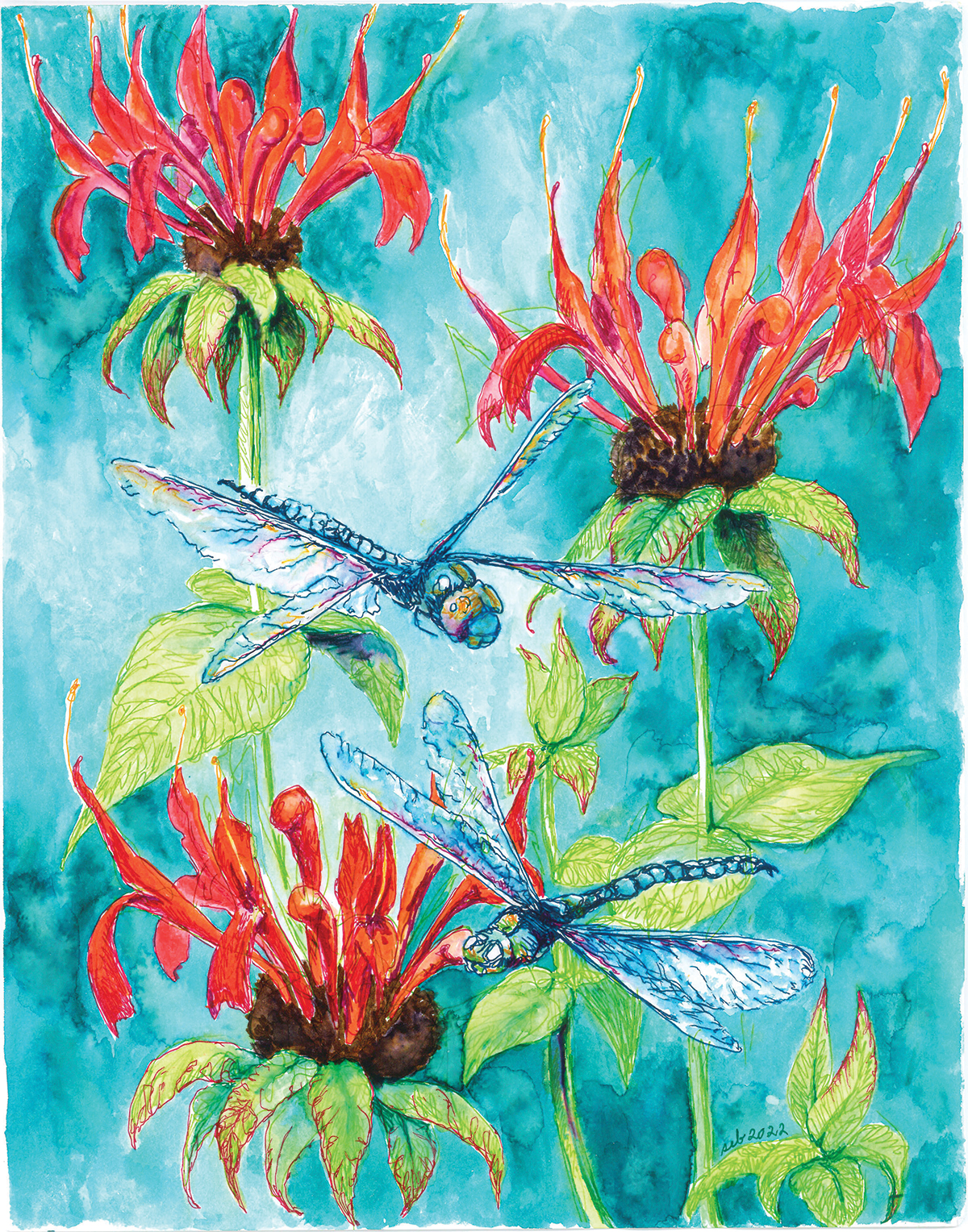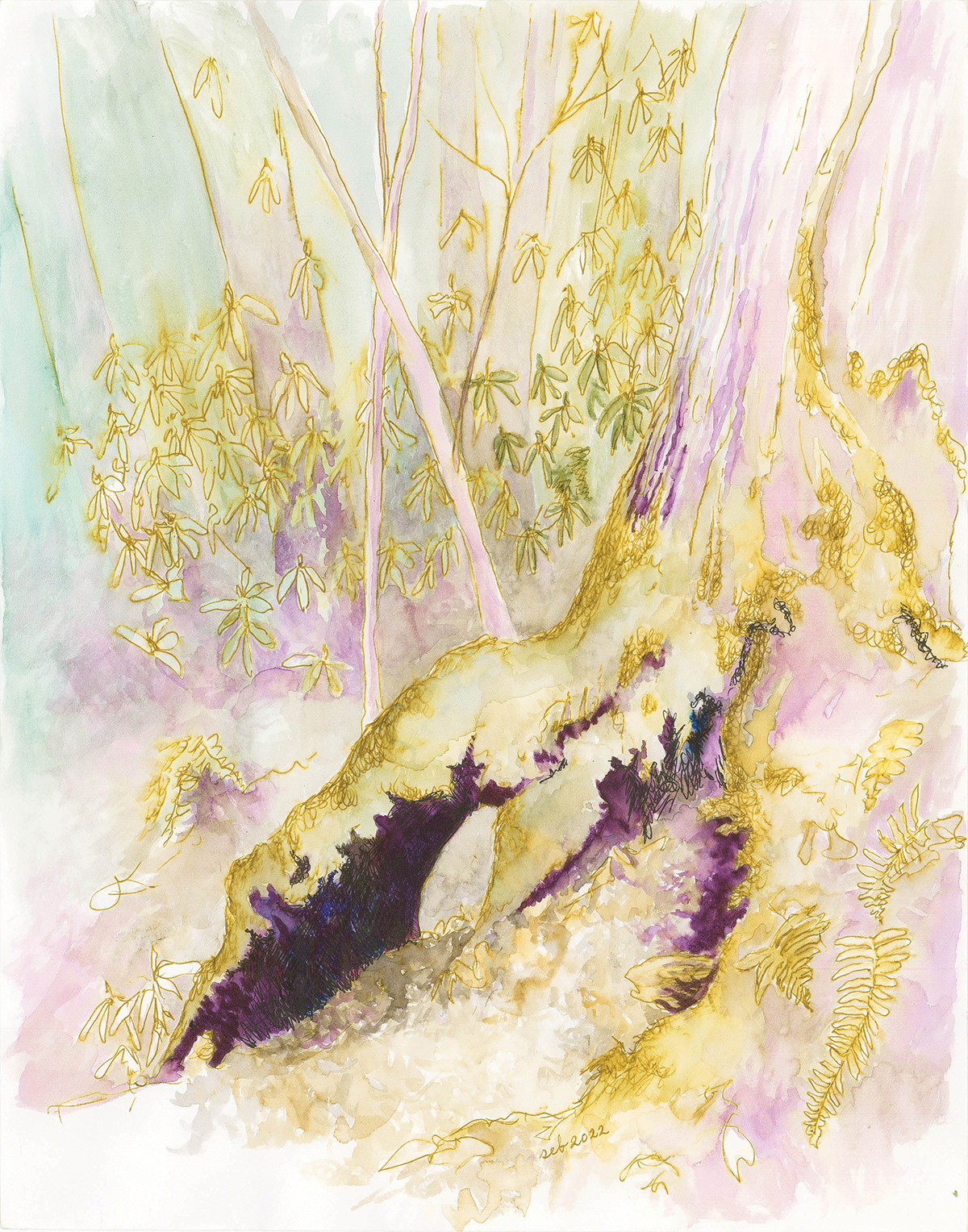
Photo by Colby Rabon
Lots of kids are encouraged to do art. But Sara Bell was commanded.
She vividly remembers the many times she felt agitated when she was young and was told by her mother, “‘Go to your room and draw.’”
As Bell notes, “Mothers know their kids, and it always worked. It calmed me down and got me out of my head. When I draw, I can lose track of time and space. That’s a very appealing place to be.”

That early, calming practice evolved into a lifelong pursuit of drawing, painting, printmaking, and creating mixed-media works like her current series, which focuses on WNC’s abundant forest flora. The Weaverville-based artist majored in visual communication at Maryland Institute College of Art. Now she strives to visually communicate the magical, profound connection that comes from getting up close and personal with the million-plus acres of national forest in Western North Carolina.
Bell explains, “I think that for most of us these days it’s difficult to find a way to connect with nature because we are often so busy in urban environments. But we share a universal want to connect with [the outdoors] on a deeper level than maybe our society allows us.

“Through my art, I hope to give [viewers] the opportunity to revisit that magic. I want it to help create a safe haven in their lives.”
Most of her compositions start en plein air, sketching in the woods, and Bell finishes them in the studio with water-based inks and watercolor paints. Although her previous body of work focused on figurative drawing, she soon discovered that drawing trees isn’t all that different — except they do make easier models.

“Trees have a lot of the same kinds of forms and gestures that people do,” she notes. “But while we all have a tendency to fidget, trees stand perfectly still for you to draw them.”
Going into the mountains to draw and paint might be Bell’s own style of “forest bathing” — the trendy term for deep, minute observation in a woodland setting.

“It is a whole immersive experience,” she admits. “I like to stop and find the little things, like wildflowers, that others might not notice. I was just at Craggy Gardens [on the Blue Ridge Parkway] and the mushrooms were up, in all shapes and sizes, in the community of ferns and trees.”
But it usually comes back to trees. “I did a watercolor of one at Craggy,” she relates, “and a lady saw it and stopped in her tracks. She said, ‘I know that tree!’ When she was a kid, she used to play on it, when her grandparents took her up there, and she called it the Troll Tree.

“Those moments are just amazing — when you can both connect with a place even though you found it in your own different ways.”
Sara Bell, SB’s Artistrees, Weaverville, sbsartistrees.com. Bell is represented by Asheville Gallery of Art (82 Patton Ave., downtown, ashevillegallery-of-art.com) and her work can also be found at BAD Craft — Beer, Art, and Desserts (128 Cherry St., Black Mountain, badcraft828.com). Bell will participate in the Weaverville Art Safari on Saturday, Nov. 5 and Sunday, Nov. 6, 10am-5pm, at 11 Gale Kelly Court, Weaverville. For more information, see weavervilleartsafari.com.